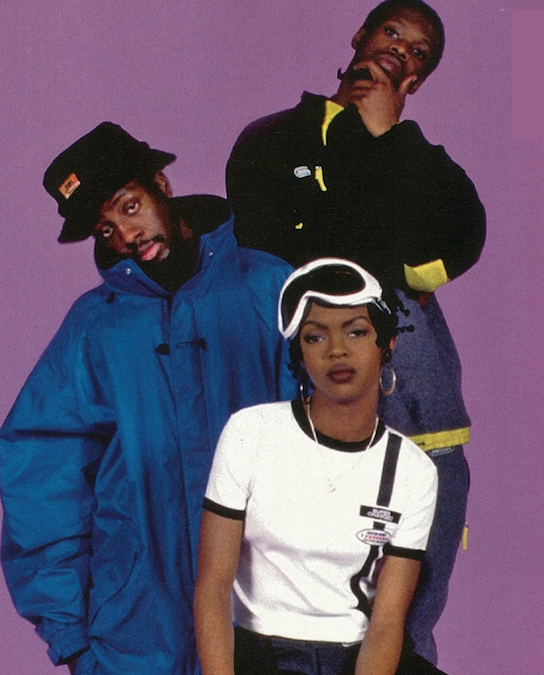Words by: KC Orcutt
From The Source Magazine Issue #269 | 2016
In the March 1996 issue of The Source with Tupac Shakur gracing the cover, The Fugees second—and consequently final—studio album, The Score, received the highly coveted five mic score.
Released on the same day as ‘Pac’s All Eyez On Me, both projects made very different but remarkably influential contributions culturally, riding high on the charts alongside the likes of Nas, Mobb Deep, Snoop Dogg, Lil’ Kim, MC Lyte, De La Soul and JAY Z. While 2016 has many Hip Hop heads feeling nostalgic, there’s something about The Score that is tried and truly timeless. Whether listeners were crawling in diapers or driving down the interstate with the windows down and radio blasting at the time of the release, the legacy the album holds is irrefutable. There’s a little something for everyone in The Score and that’s what makes it such a breath of fresh air, even twenty years later.
Comprised of Wyclef Jean, Lauryn Hill and Pras Michel, The Fugees gained notoriety by blending 90s era definitive boom-bap with soul, reggae and Caribbean music, in a way that was progressive but remained digestible to mainstream audiences.
The singles the album birthed immediately come to mind, such as “Fu-Gee-La,” “Ready Or Not,” and “No Woman, No Cry,” with the pipes Hill has on the now-classic cover of “Killing Me Softly With His Song” winning her over lifelong fans. The track, interestingly, was not intended to be a cover of Charles Fox and Norman Gimbel’s original, but the Fugees were denied permission to rewrite the song entirely. A year later, the song led the trio to winning a Grammy Award for Best R&B Performance By A Duo Or Group, while the album itself took home Best Rap Album.
While it can be argued the group rallied to find their winning sound for this project collectively, especially considering their debut album did not see the same acclaim, Hill had really begun to hit her stride as an artist. Whether L. Boogie is rapping or singing, she consistently blesses the mic every time it’s passed to her, making a case to be considered the intriguing centerpiece.
The back-to-back storytelling vocal approach on tracks such as “The Mask” and “How Many Mics” gives the album its collaborative strength, with all members sharing the mic sensibly and creating complex lyrical content throughout. Their group dynamic is impressive; one that balances an organic edge with a distinguished polish, achieved with the outstanding musical direction of Jean and Michel.
Besides being extremely well received over the years, with its iconic cover art plastering teenagers’ bedrooms and wallpapering record stores alike, the album also helped catapult massive solo careers for each member. Noting the group would not continue to release music as The Fugees, the album graciously reflects absolutely zero of the tension the trio went through that led to their nasty break-up not too long after.
As Selwyn Seyfu Hinds and Bakari Kitwana wrote in the July 1997 issue of The Source Magazine, “The real art of the Fugees may lie in their ability to take their message beyond their music, to show the world that there is still power in Blackness.”
Two decades later, real still has to recognize real.
